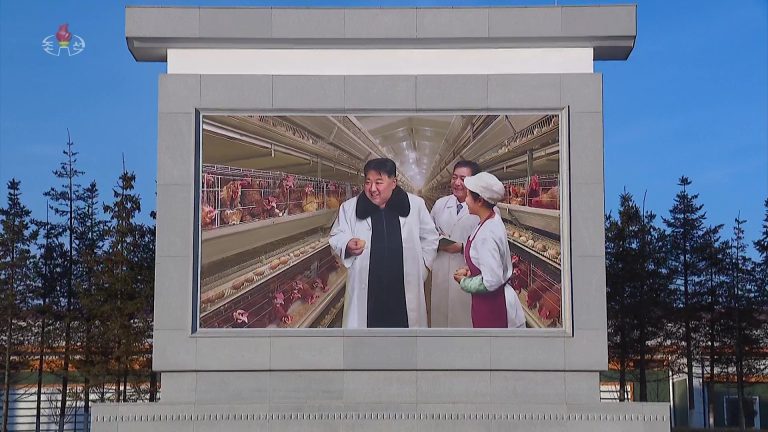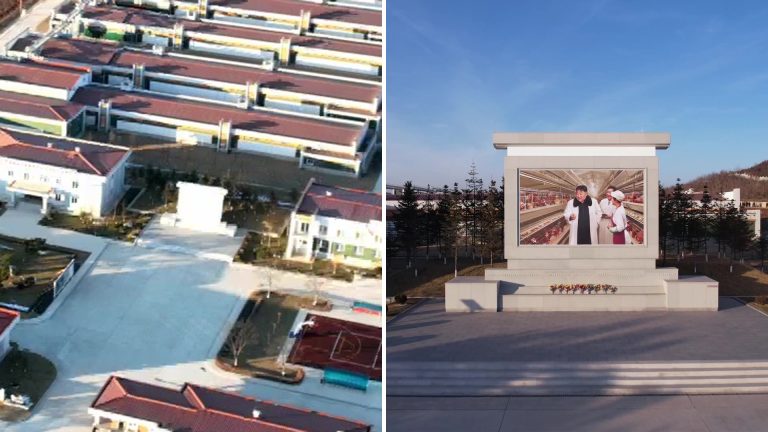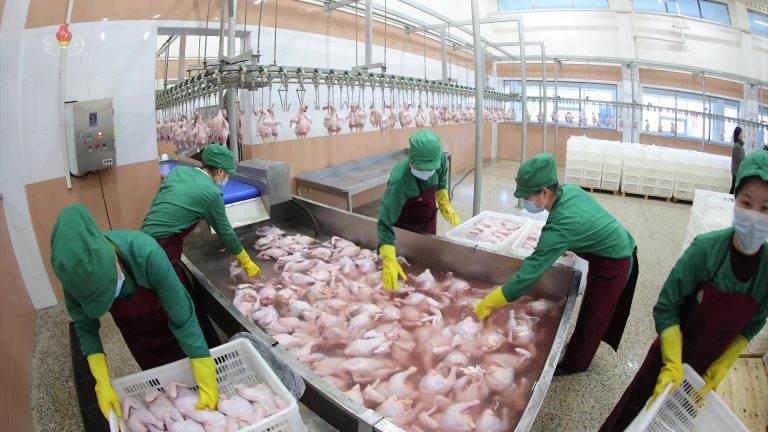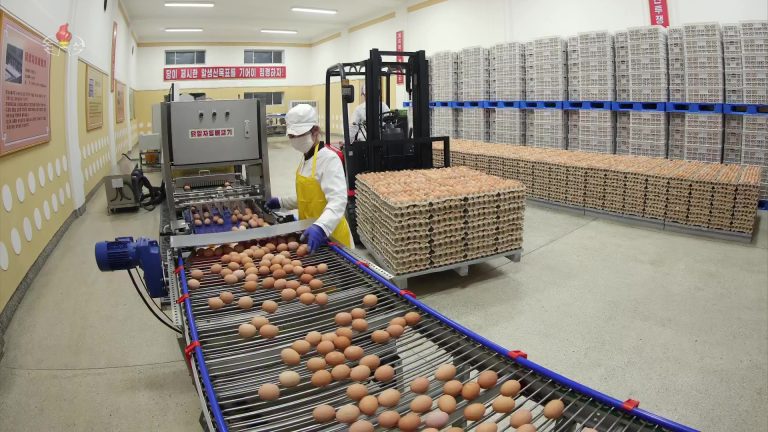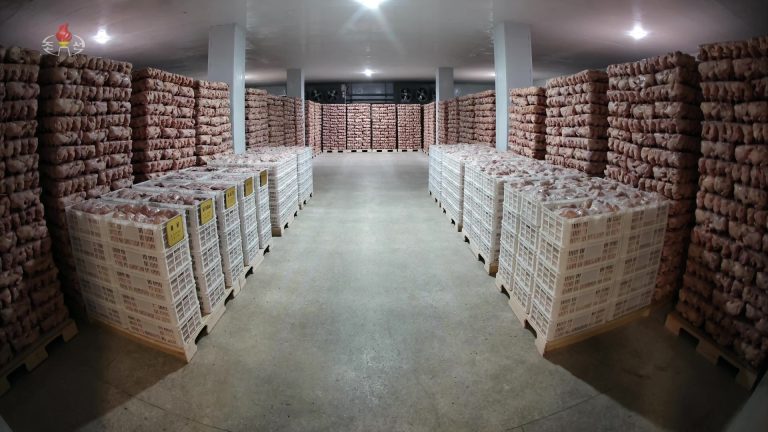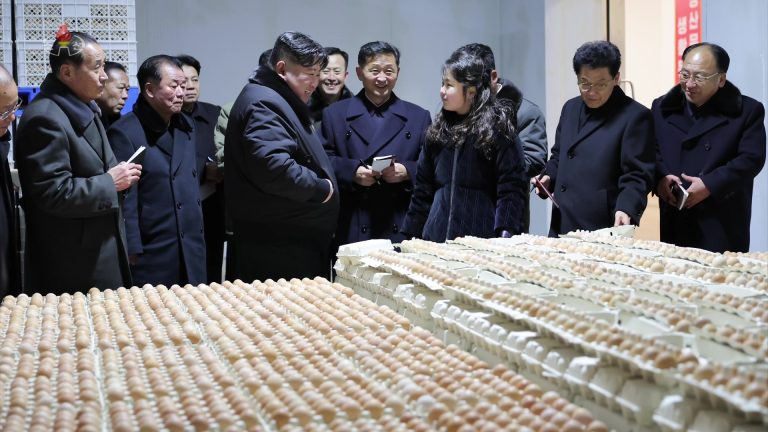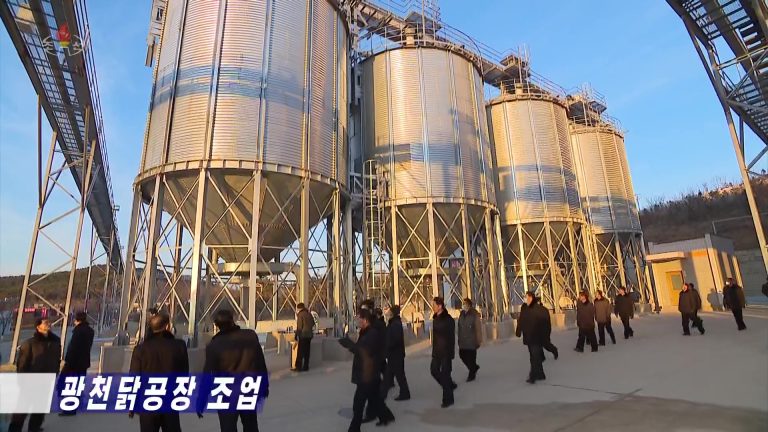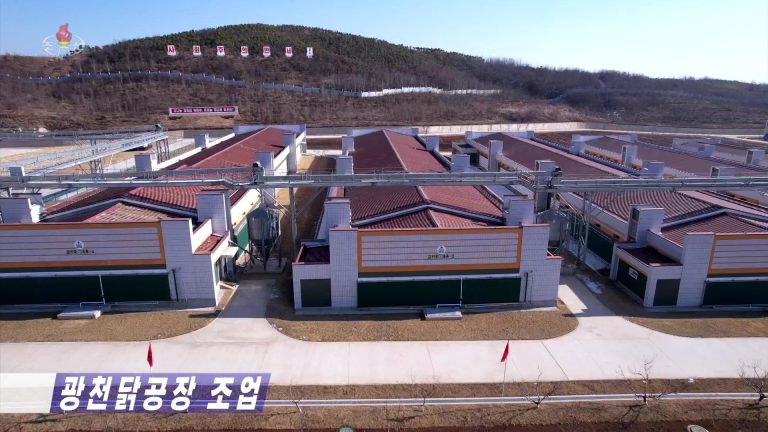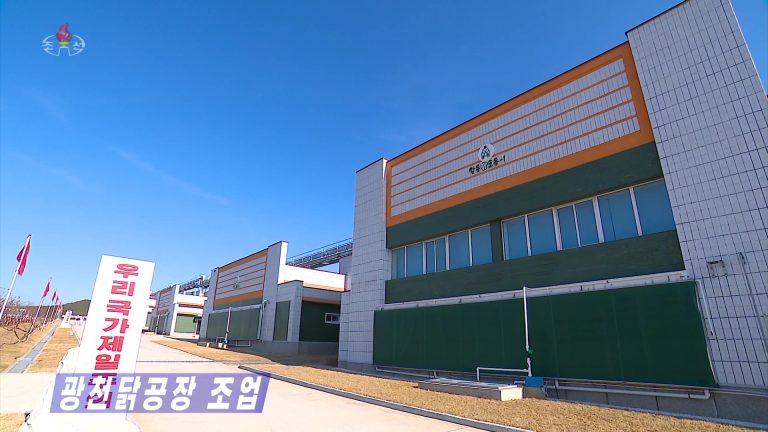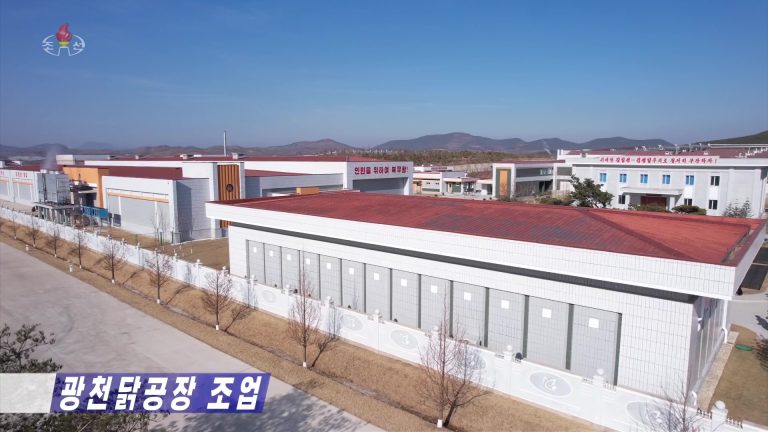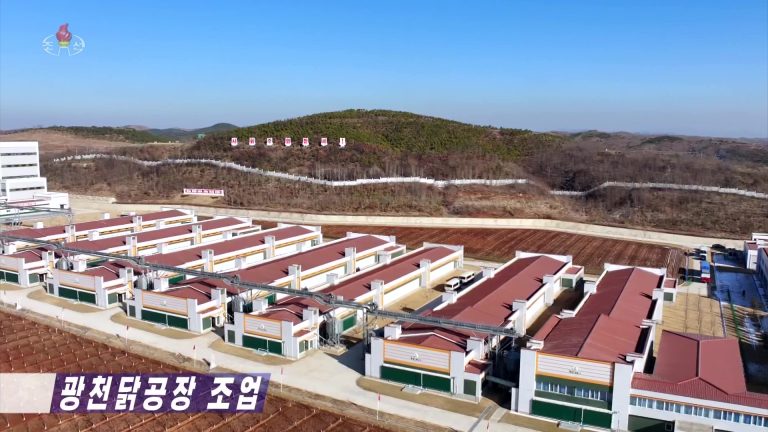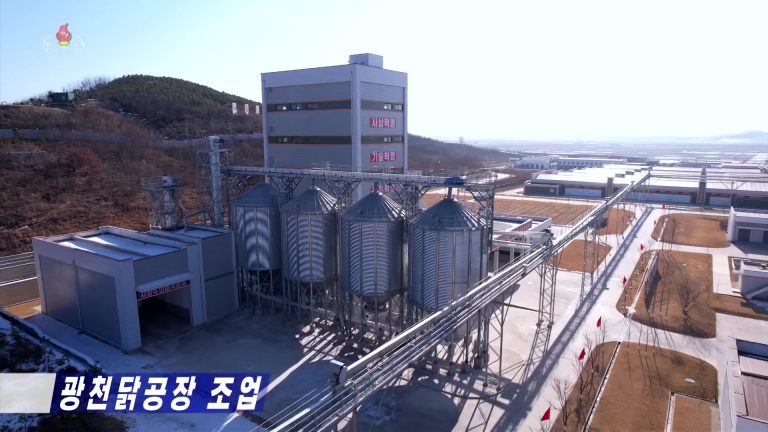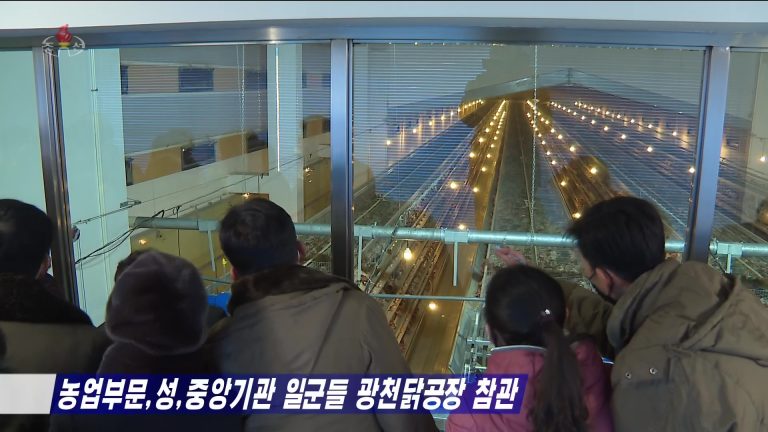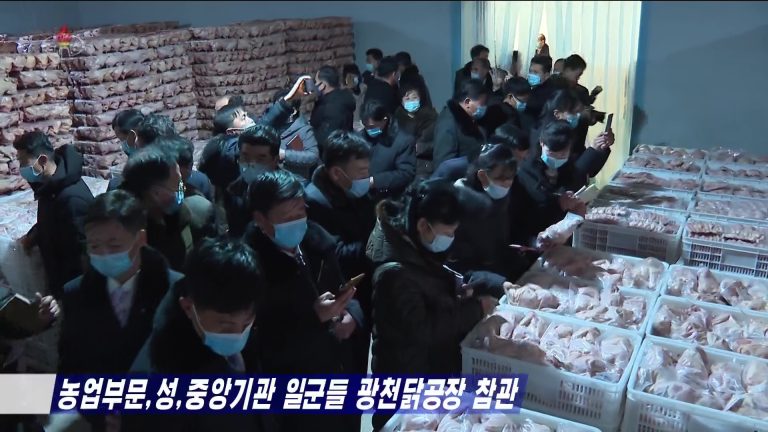North Korea’s Model Chicken Farm Opens With Plans for More
The Kwangchon Chicken Farm (광천닭공장) is finally up and running, according to North Korean state media. The project is said to have been “personally initiated” by Kim Jong Un and is being held up as a new model for the country’s poultry production as North Korea tries to increase the amount of protein available to citizens.
On January 7, Kim visited the farm with his daughter, one of the few times she’s been seen accompanying her father in a non-military setting. During the visit, Kim called for the country’s other poultry farms to be upgraded following the Kwangchon model and announced plans to build a second new farm in the Pyongyang area this year.
The plant was formally inaugurated a few days later, and officials began touring it to see how it works. While it is unclear what new technology has been implemented to modernize this farm, it is already being studied as the answer to what Kim has described as outdated poultry farming practices.
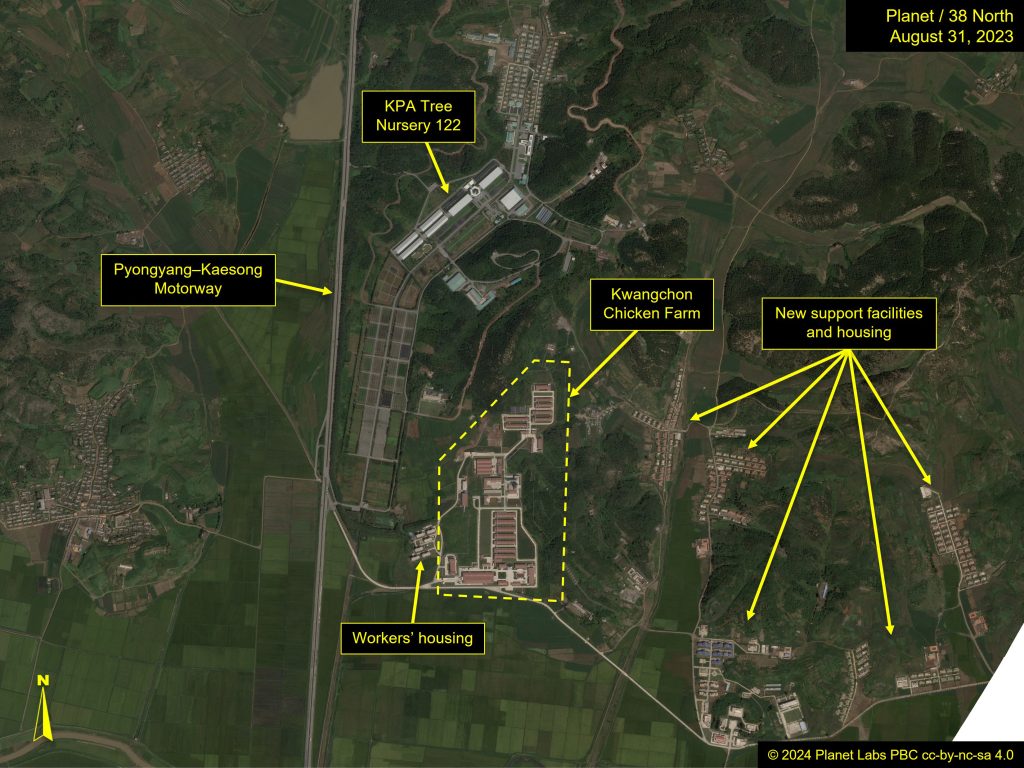
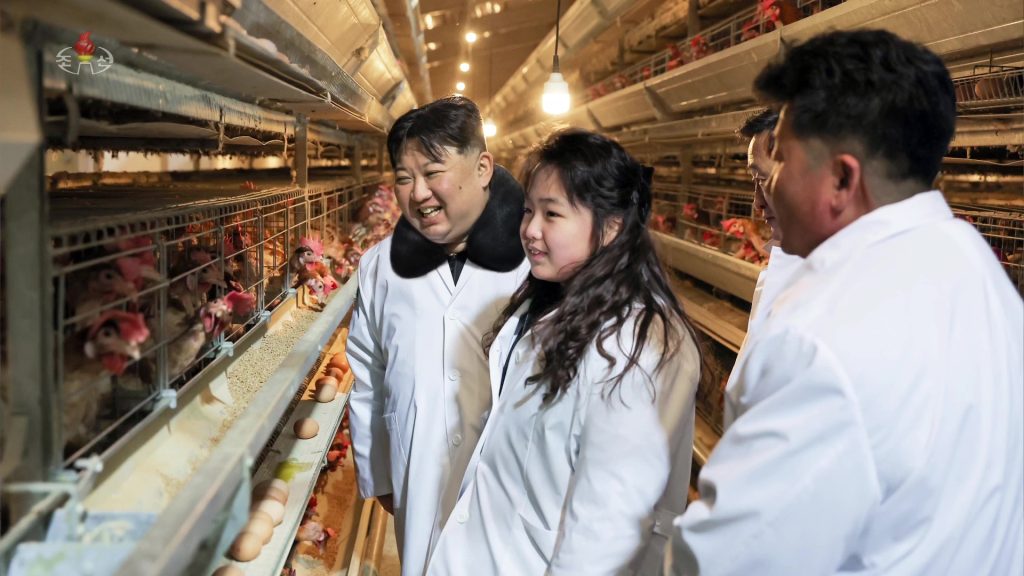
Background
Ground clearance for the farm began around May 2019, and several buildings were already well under construction when Kim Jong Un made his first reported visit to the site on July 22, 2020. At the time, state media said it would produce thousands of tons of meat and tens of millions of eggs per year and quoted Kim as saying it would be an “icon” on which others would be based. The report also gave a poor review of the country’s existing poultry farms, saying, “chicken farms in our country which are said to have been modernized are now backward as they are more than 20 years old.”
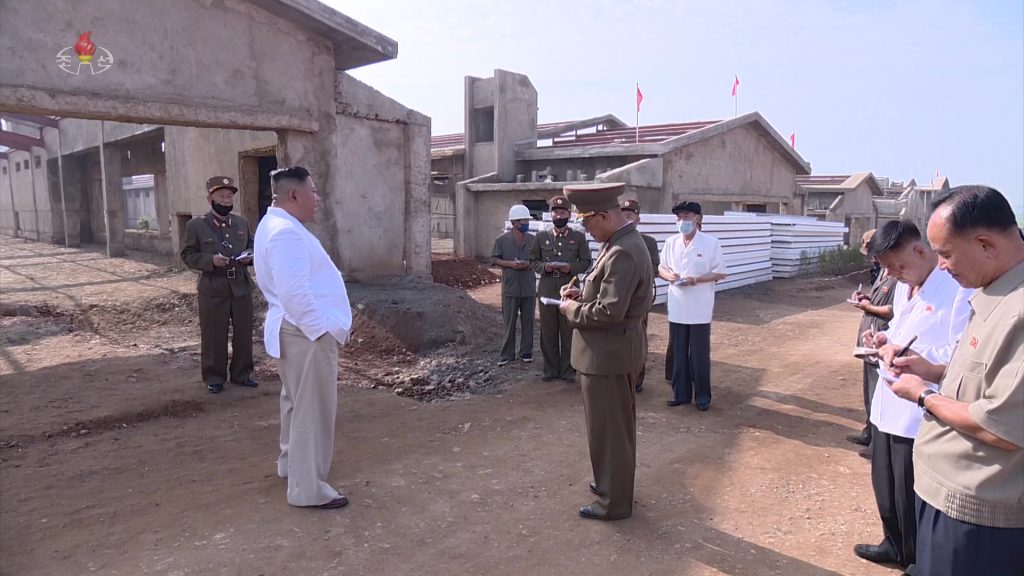
Despite its seeming importance, Kim’s visit last week was apparently his first since 2020. Typically, the leader might be expected to make one or two subsequent visits to projects he has personally started, but if such visits were made, they were not reported. Moreover, photos of the site’s museum, which is a standard part of major North Korean industrial sites and memorializes visits by the leader, also only showed images from the 2020 visit.
In between Kim’s visits, other senior officials did stop by to monitor progress. Five days after Kim’s initial visit, Choe Ryong Hae, chairman of the Standing Committee of the Supreme People’s Assembly, visited, and both Premier Kim Tok Hun and Pak Pong Ju, now retired but at the time vice chairman of the State Affairs Council, made reported visits in 2020 before dwellings for over 1,000 households associated with new feed supply farms were opened in the area in December 2020.
Choe made two visits in the first half of 2021 and a single visit in January 2022, followed by Kim Tok Hun in April 2022, but no senior officials were reported to have visited since. The farm has barely been mentioned by state media in the last year, leaving somewhat of a question over its status for most of 2023.
However, that question has now been answered.
The Inauguration
The plant was ceremoniously inaugurated on January 13, although images from Kim’s visit a week earlier show it had already been operating. TV images showed hundreds of chickens already processed by the plant and thousands of eggs.
Similar images were broadcast with the opening ceremony, including shots of a freshly painted mural of Kim’s visit six days earlier. Although Kim’s daughter was present in most shots broadcast on state media a week earlier, she does not appear in the mural.
If there were delays getting the farm up and running earlier, they have not directly been mentioned in the reports. However, Kim was credited with solving “the problems arising in the construction, including the design and the supply of materials and funds.”
The Farm
Upon Kim’s initial visit in 2020, state media said the farm would produce thousands of tons of meat and tens of millions of eggs per year. Those numbers have not been repeated, but the TV images show a substantial operation.
Viewed from overhead, the farm is dominated by long coops and does not look particularly different from other poultry farms in the country. It relies on the same battery farming technique used across the country. Battery farming is an intensive farming process where animals are kept in long lines of identical, small cages, often stacked several high. Several hens occupy each cage, and the eggs they lay roll to a gutter in front of the cage, making collecting them easy.
What is apparently different is the production process. The report on Kim’s visit lauded the production process as both “intensive” and “automatic” but did not give further details about what that meant.
Still images broadcast by Korean Central Television show Kim looking at parts of the production line with his daughter and officials.
The farm is also notable for a large solar array on its north side that provides power for the facility.
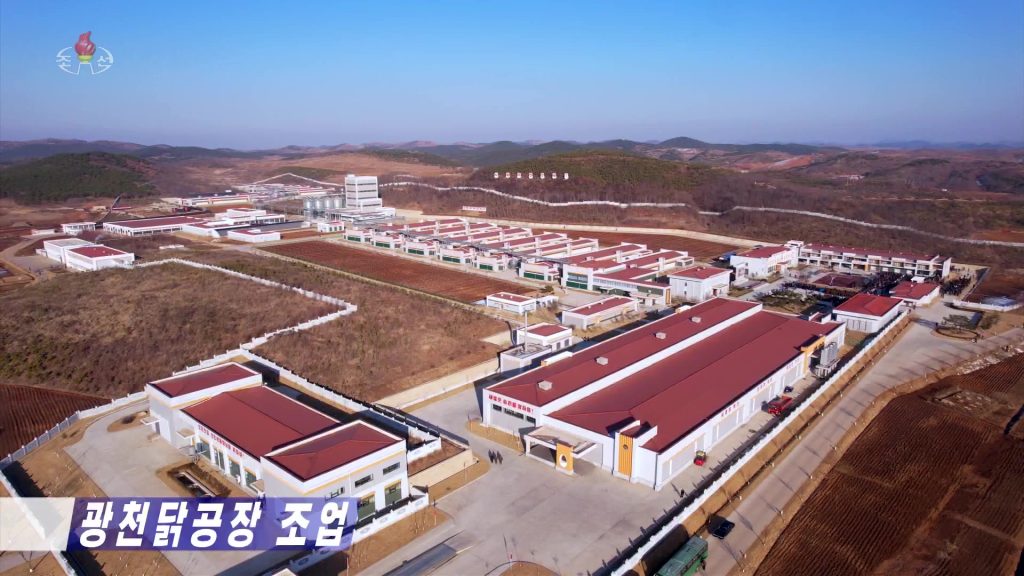
North Korea’s Chicken Farms
Since Kim Jong Un made his first visit to Kwangchon Chicken Farm in 2020, two other chicken farms have reportedly been renovated. Both Sinuiju and Kusong farms were reportedly remodeled in November 2021, but this might not have been in accordance with what Kim is calling for now. At the time of those renovations, Kwangchon was nowhere near finished, so it’s unlikely any lessons from its construction would have been possible.
However, a day after the site’s inauguration on January 13, state media reported that “officials in the agricultural field, ministries and national institutions” visited the farm to inspect the site and learn how it operates.
Farming Modernization
The opening comes at a time when the country is increasingly looking to technology to upgrade its agricultural sector and increase food production.
At the plenary meeting of the party congress in late December, Kim set a 2024 goal for the “development of farm machines” and “mechanization of the rural economy.” These will be significant steps for a sector that still largely relies on manual labor and necessitates the mobilization of students and city dwellers into the countryside to support farmers during busy periods.
To underline this push, Kim spent January 2 visiting an exhibition of farming machinery in Pyongyang that included “tractors, rice-transplanters, unmanned helicopters for agriculture, wheat and barley planters and mobile combined maize threshers.” During the visit, he said the modernization of farming methods was an “urgent requirement.”
And last week, as news of Kim’s visit was still being replayed, state television broadcast a 32-minute-long feature on foreign farming methods.
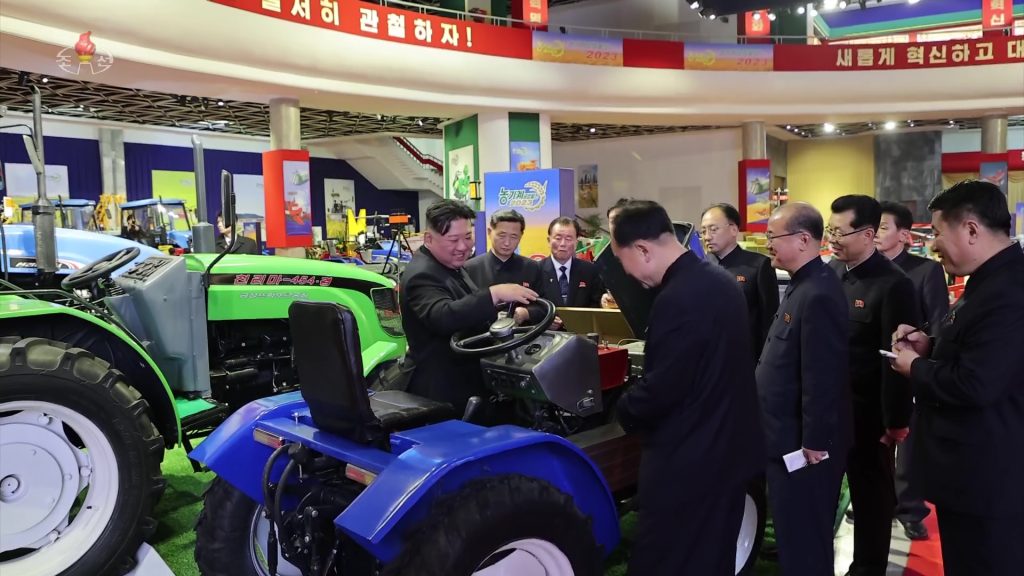
Food Security
The focus on farming is all about increasing food security in the country, which is chronically short of food at the best of times. The United Nations World Food Programme (WFP) estimates that around 40 percent of the population is undernourished, and 18 percent of children are stunted due to chronic malnutrition. WFP hasn’t had an active presence in the country since the COVID-19 pandemic, so current conditions are largely unknown.
At December’s party plenum, state media noted “a rare harvest was achieved” in 2023, but also stated there had been a “serious food shortage caused by the last year’s poor farming.”

